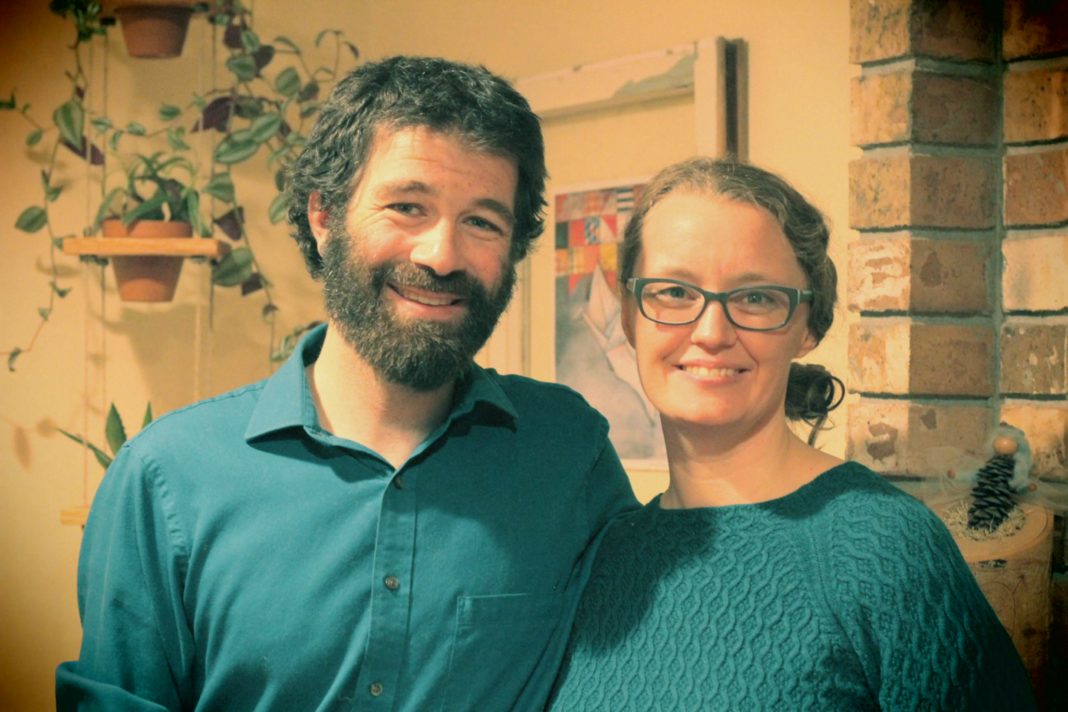When thinking about accessibility for all people, often it is the visible, obvious things that come to mind, such as wheelchair ramps, handrails and service dogs. However, even telephones can be a matter of accessibility. Karma and Michael Arslanian are a married couple living in Olympia who work as American Sign Language (ASL) interpreters for Video Relay Service. Even with the modern influx of texting that occurs nowadays, all people (including Deaf people) still need to make phone calls. Without this technology, many individuals would not have the option of making both business and personal phone calls independently.
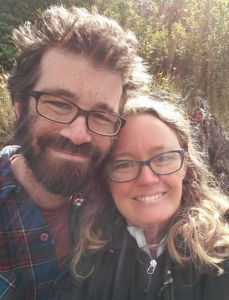
Video Relay Service (VRS) allows a Deaf person, who communicates through ASL, to converse on the phone with a hearing person. Many phone calls are for businesses – utility companies, doctors, restaurants, etc. – but many people make personal calls using VRS as well. Here’s how it works. When a Deaf person calls a hearing person or a hearing person calls a Deaf person, the VRS system automatically connects them to a Sign Language Interpreter or Video Interpreter (VI). Throughout the call, the interpreter signs with the Deaf person over video, and speaks with the hearing person in English or Spanish, if one of the callers requests it.When a Deaf person calls another Deaf person, there is no VI connected and the two Deaf people just sign directly on video. This system services both hearing and Deaf communities by allowing for easier communication than typing, and letting both parties communicate in a language comfortable to them.
Karma and Michael Arslanian moved to Olympia from Colorado, where they attended to school Front Range Community College in Westminster for interpreting. They have been interpreters for 11 and 12 years, respectively. “At that time, most of the programs were only two year programs, so that’s what we did,” Michael says. “Those two year programs have existed, really, all over the country, but many of them are closing down,” Karma adds. The interpreter preparation program in Seattle closed several years ago and there are no other programs nearby. “What we hear is that it’s creating a little bit of a shortage of interpreters,” Karma points out.
In addition to a lack of awareness about the interpreting community in general, many people may also not realize that there isn’t a one-size-fits-all interpreting job. Interpreters can specialize in a field of expertise. They can be specially trained for VRS, legal situations (like court), interpreting in schools or community work such as doctor appointments. In many situations, there will be more than one interpreter during a job to make sure that all of the information is being translated correctly. Depending on the density of the information and the type of work, the number of interpreters and how they switch off varies.
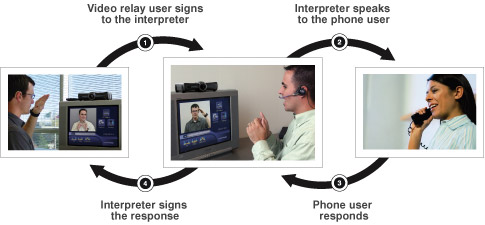
Deaf people can also be interpreters, an often overlooked aspect of this profession. “I have never actually interpreted with a Certified Deaf Interpreter (CDI),” Karma says. “I’m going to give a legal example because it is very common to use a CDI in a legal situation. The information is so high stakes (someone could go to jail or they were the victim) and there is so much nuance culturally and linguistically, that I, as a hearing person, don’t always pick up on, unfortunately. The Deaf interpreter interacts with the Deaf person and gets a really good, deep understanding of what they’re saying, and then they give it to a hearing interpreter in a way they know the hearing interpreter will understand as a hearing person. They’ve had training on how to do this.”
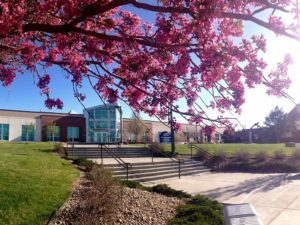
Deaf interpreters are also often misunderstood, but they’re a vital part of the interpreting and Deaf community. They are specially trained to know how to convey a message in a completely different language. Contrary to some beliefs, ASL is not a pantomimed or signed version of English. It is its own language with its own grammar and arrangements of signs, phrases and terms.
Having more than one interpreter in a situation is common, Michael says. And there are different ways to do this. “I can interpret for 20 minutes and then Michael will, that’s a really common way,” Karma explains. “Or, sometimes we sit next to each other and if Michael notices something that I’ve missed or needs explaining a little bit more, he’ll jump in.” Another possible arrangement in an educational setting is to have one interpreter relaying information to the student and the other speaking when the student wants to communicate.
Interpreters can feel negative effects if they are interpreting upsetting or angry conversations. The Arslanians say that self-care is the way to cope with “vicarious trauma,” feeling stressed or emotionally drained from their exposure to traumatic communication. Michael likes to play music in his free time and rides his bike to work as another mind-clearing activity. “By allowing myself to have passions in other places, by doing those things, then that allows me to really show up for my profession and work,” Michael adds. “Then when I’m done with work, I’m done.”
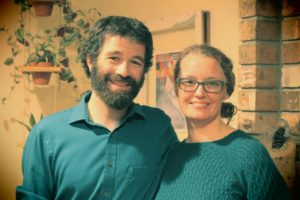
However, interpreting isn’t always complicated, Karma and Michael assure. “The best part about it is that I get to do really meaningful work for a living wage,” says Karma. “I may have felt like I made a mistake while interpreting, but I have never had regrets about my job.” Michael concurs. “I feel very grateful to be proud of my job and the work that I do,” he adds. “I also enjoy the linguistic piece of it. It’s a practiced profession, like nursing or counseling and there’s something about those kinds of jobs that are growth-oriented.”
Karma and Michael have created a personalized schedule to meet their family’s needs. Instead of having one parent exclusively work and the other exclusively stay at home, they split a full-time job. With VRS, employees can create their own schedule. “We ask for hours and as long as those hours are available, we work them,” Karma says. “it was a very appealing part of the relay work,” Michael adds. “That is a lot of the reason why someone might choose one area of interpreting over the other.” Interpreters for a school district get summers off, for example. People who want to plug hours into their existing schedule may do irregular community work (like doctor appointments). A positive aspect for Karma and Michael is being able to work locally, as many of the western Washington interpreting jobs are in the greater Seattle area.
For people interested in the interpreting profession, Karma and Michael both recommend enrolling in a four-year program and to get involved in the Deaf community. Seeing how ASL is used “in the real world” will lead to a greater understanding of the Deaf community and its culture. Interpreters hold a great deal of responsibility. How they translate information directly impacts both hearing and Deaf people. Michael states that he’s learned that you never know the full story behind a conversation, so interpreters should not judge what they see and hear. This sentiment is certainly one for all people, interpreters or not, to keep in mind. To contact an interpreter or to find out more, please visit the Registry of Interpreters for the Deaf, Inc.








































